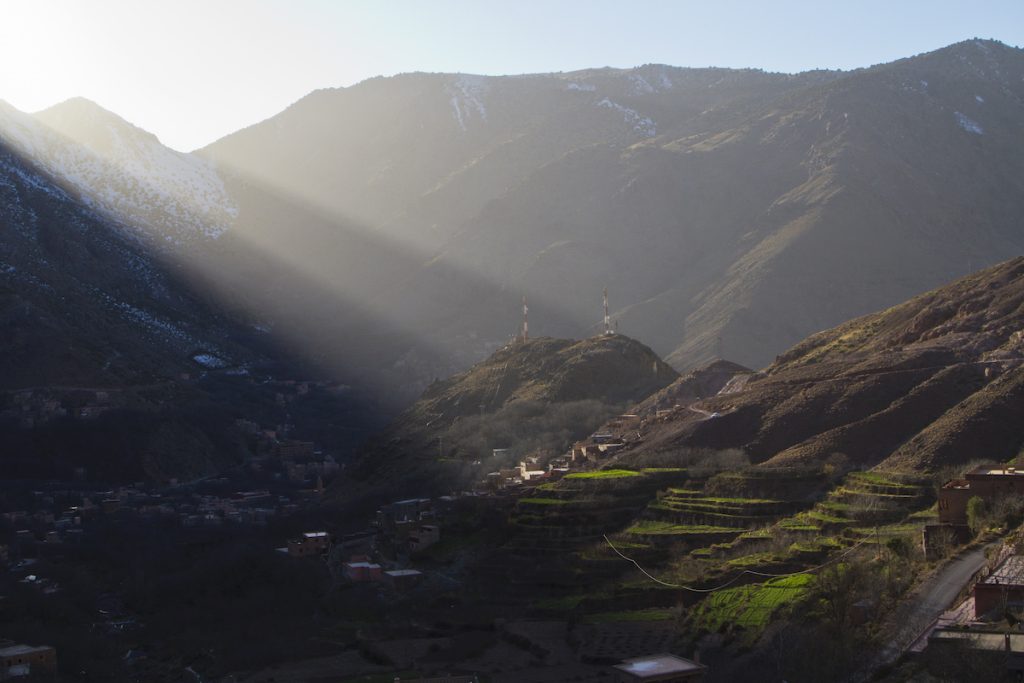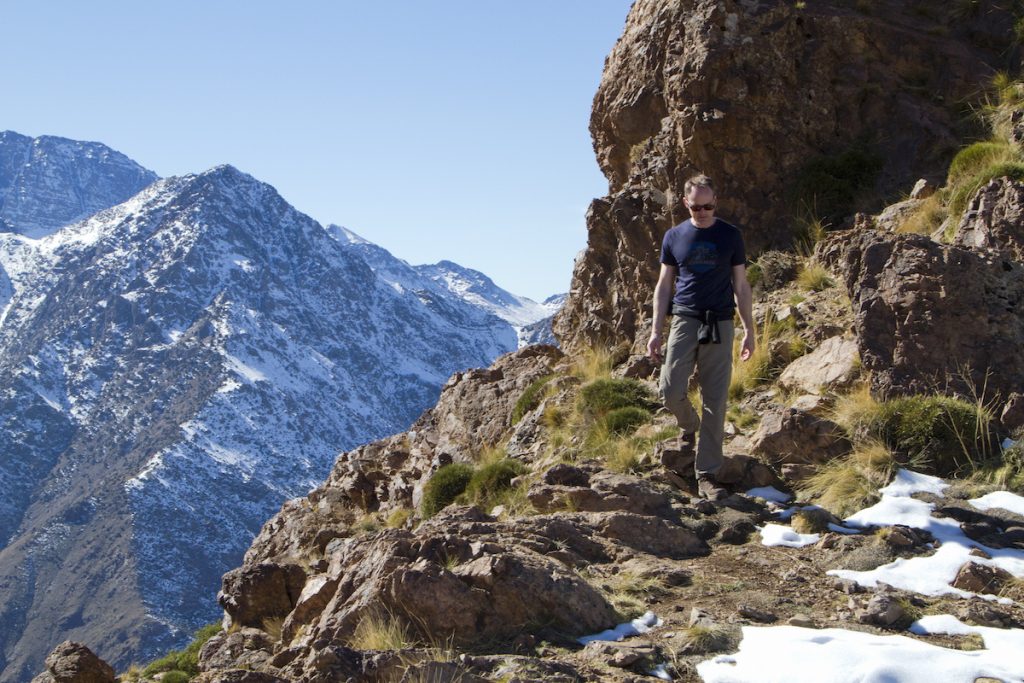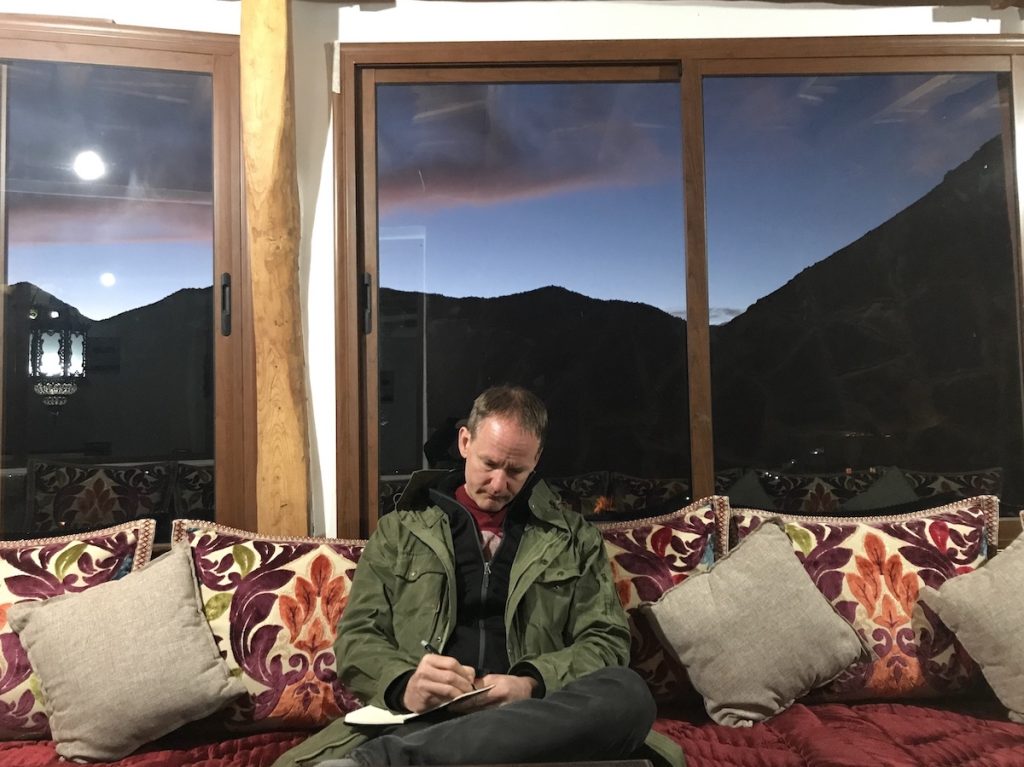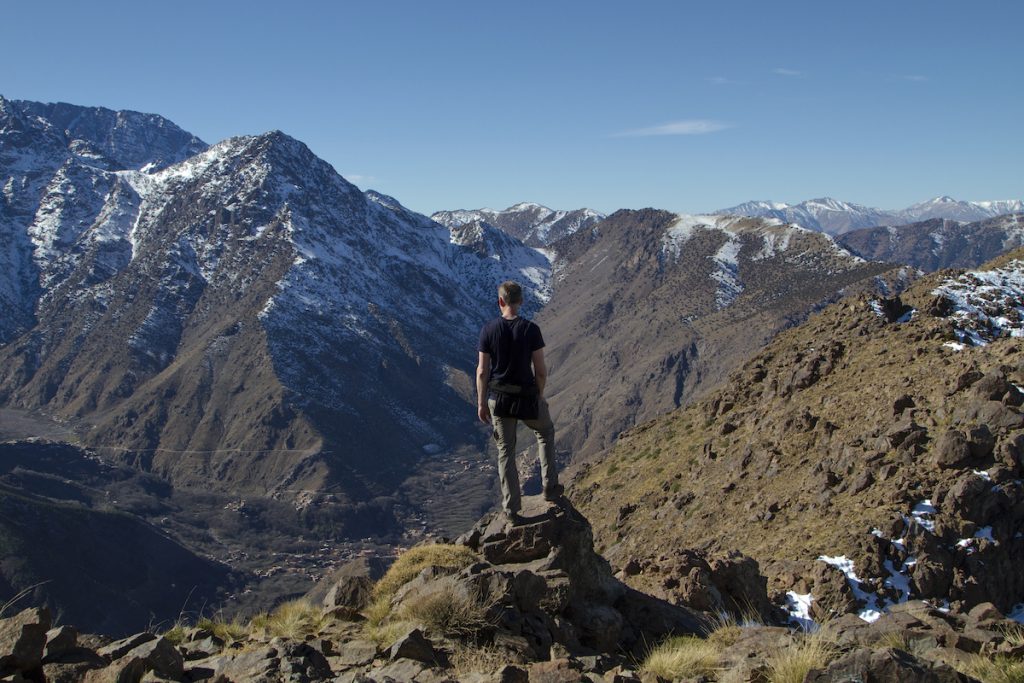
We left haunted Telouet in silence, to rejoin the main road and cross the mighty Tizi-n-Tichka pass before winding our way back down to the flats in search of another route that would lead us to the High Atlas village of Imlil.
As is the way of sat nav shortcuts, we were slightly misled.
The road soon became a single lane track hugging the side of mountain slopes. Every curve was cut through by meltwater streams, and the rest was stitched together with little more than potholes and good intentions, but there was no turning back — and no turning around either, even if we wanted to.
We passed through tiny villages lost near the top of forgotten hills, regions where shepherds grazed sheep and scratched a difficult living from scarcely arable land. Those little clusters of humanity were separated by longer stretches of mountain track, with precipitous drops into valleys whose base we couldn’t see.
I was struggling to focus my road-weary eyes by the time we finally reached Imlil, some six hours later and 1,800m (5,900 feet) above sea level, but hot mint tea was waiting at our small mountainside guest house, followed by a steaming tajine filled with tender chicken and vegetables.
It was then that we remembered it was Christmas Eve.
The next morning dawned without stockings or gifts, but the prospect of hiking had blotted all thoughts of St. Nick from my mind.
We set out on paths that led through the village, but it didn’t take long to leave the last house behind. A winding trail of loose gravel zigzagged up a slope planted with pines before breaking through the tree line. It was steep, but not particularly difficult going, and we reached the first peak in under two hours.
The second, higher, peak was less than an hour further, beyond a short snow-clad couloir.
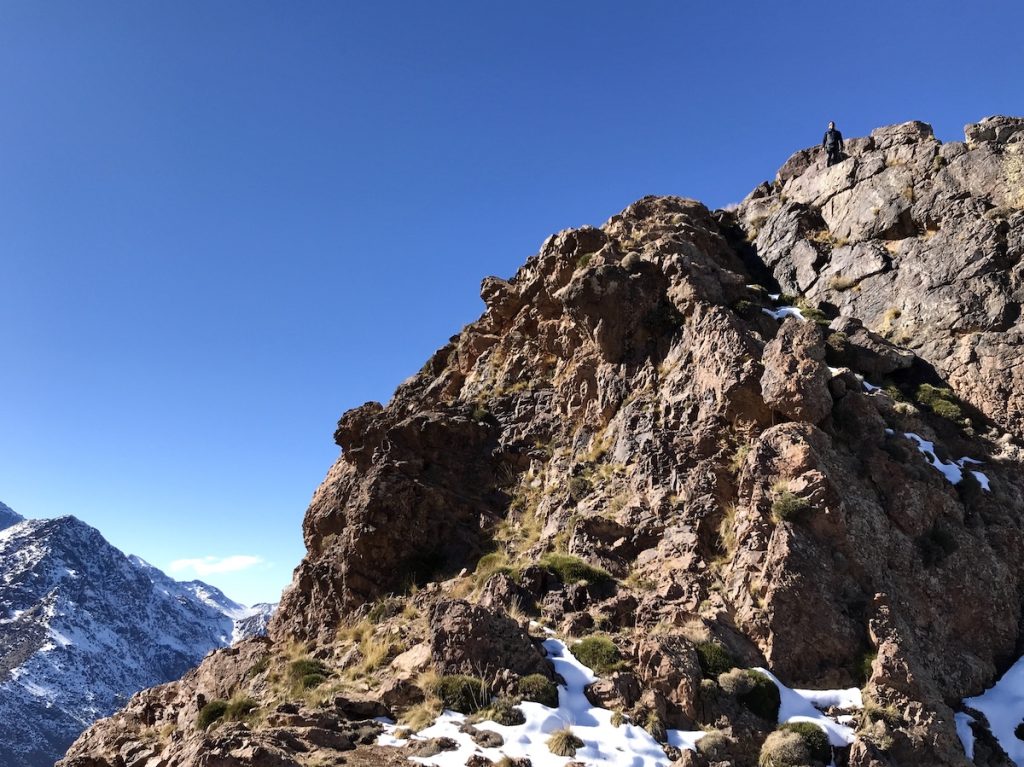
Our point of origin was visible far below, on the edge of the village clustered into a river’s deep cleft. Jebel Toubkal towered above, its 4,167m (13, 671 foot) peak dusted in snow.
Imlil is a relatively modern creation, having grown into a bustling village to cater to trekkers who sought to summit Morocco’s (and North Africa’s) highest mountain. The surrounding region was better known as a source of excellent apples, cherries and walnuts, and now as a location for the 1997 Brad Pitt film Seven Years in Tibet.
As well watered as it obviously was, the fertile green of the valley changed abruptly to the brown of the hills; a vivid reminder that we were on the edge of the Sahara, on the crest of the line dividing the country’s fertile coastal plains from the Earth’s largest arid region.
We would be driving across those plains the next morning to end our journey in the laid back seaside town of Essaouira, but it was the desert beyond the Atlas that stayed in my mind.
The Sheltering Sky is famous for posing an existential question as timeless as its dune-filled setting.
“How many more times will you remember a certain afternoon of your childhood, an afternoon that is so deeply a part of your being that you can’t even conceive of your life without it?” he asks us. “Perhaps four, or five times more? Perhaps not even that. How many more times will you watch the full moon rise? Perhaps twenty. And yet it all seems limitless.”
I wonder if the Glaoui knew how brief their meteoric rise would be?
The desert is bigger than all of us, you know. Even the once-mighty Lords of the Atlas.
Photos ©Tomoko Goto, 2019
